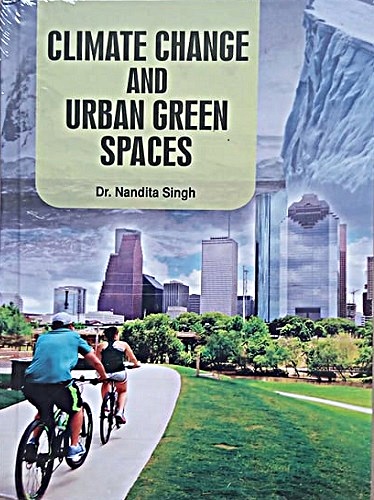Climate Change And Urban Green Spaces By Nandita Singh. 1/e. 2020. Hardcover
Description
Climate change is one of the most significant global challenges
facing the world today. It is also a critical issue for the world’s
cities. Now home to over half the world’s population, urban areas are
significant sources of greenhouse gas emissions and are vulnerable to
the impacts of climate change. Urban green spaces (UGS) contribute to
mitigate climate change impacts via carbon sequestration and offer
several co-benefits in cities. This contribution, however, is omitted in
most national and regional carbon stock estimates, and related
literature in the global south is- at best-fragmentary. Every urban
landscape is significantly different from any other environment. These
urban landscapes having green spaces decreased are mainly made of
artificial surfaces which have unique physical attributes unlike any
other landscape surface. 1he Combination of dominant artificial surfaces
and decreased vegetation creates an urban climate which influences the
air quality, outdoor thermal and human comfort. Although, half of the
Earth’s population live in cities, the importance of urban air quality
and climate issues do not have a high impact on urban planning processes
despite the fact that urban weather and climate is essential for human
well-being. Many cities are beginning to look to the ecological benefits
of green and open spaces as a response to climate change “Linear parks”
in particular are taking center stage, as they can often be constructed
on unused channels of land like abandoned rail liSor the swaths of
green that run below power lines. These green spaces often feature
networked bike and walking trails, improving the commuting experience
for many while reducing emissions and the urban population’s reliance on
fossil fuels. This book will enable students to understand the
potential and limits of addressing climate change at the urban level and
to explore the consequences for our future cities. It will be essential
reading for undergraduate students across the disciplines of geography,
politics, sociology, urban studies, planning and science and technology
studies.
Contents:
1. Modelling Climate Change
2. Nature of Earth Science in Climate Change, 3. Components of the Global Climate System 4. GreenEcosystem and Climate
5. Planning and Management of Urban Green Spaces
6. Urban Atmosphere and Green Climate Belts
7. Trees in the Urban Environment
8. Climate Change Mitigation and Forest Green Space Development.
Dr. Nandita Singh is an Assistant Professor in department of
Geography, ShriVarshney College, Aligarh ofDr. B. R. Ambedkar
University, Agra. She is Genius scholar of Govt. Mahakoshal Autonomous
Arts& Commerce College, Rani Durgavati Vishwavidyalaya, Jabalpur,
(M.P). She obtained her Ph.Ddegree from Dr. HariSingh Gaur University,
Sagar (M.P). She has valuable contribution in different branches of
geography Vz, Geomorphology, Environmental Management, Remote Sensing
& G.I.S., Climatology& Specialization in medical geography and
engaged in research work. Dr. Nandita Singh teaching geography to
Post-Graduate students with advanced techniques. She has contributed
numbers of research papers in the different field of geography In
Journals of National &International repute.
General Inquiries
There are no inquiries yet.










Reviews
There are no reviews yet.